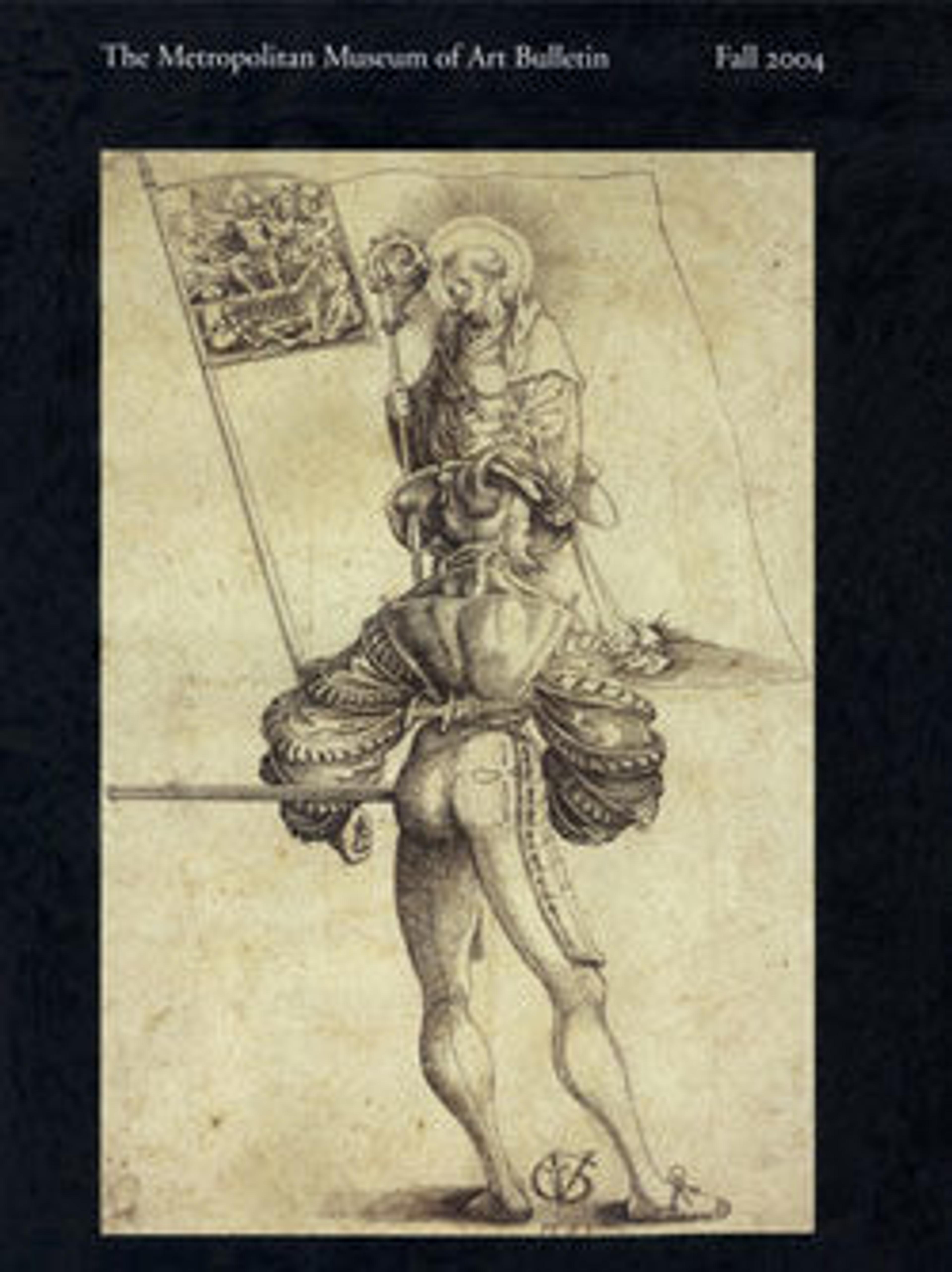"Oyster Dress"
Alexander McQueen, a British designer and a 1992 graduate of Central Saint Martin's College of Art and Design, has been hailed for his challenging perceptions of the role of fashion in political, social, and cultural criticism. His collections are often cohesive thematic interpretations, alluding to dramatic media events (the "Highland Rape," a 1996 runway consortium of tattered dresses and bloody catwalkers) inasmuch as aesthetic or artistic movements. Credited alongside peers such as John Galliano with the return of artistry to couture in the 1990s, McQueen is one of the most conceptual fashion créateurs to clothe the runway in the early twenty-first century and continues to be celebrated for his love of tactile exploration and dramatic visual representations.
A number of gowns in Alexander McQueen's "Irere" collection of spring/summer 2003 appear to be poetic renderings of a disaster at sea. While a similar dress appeared colored like the plumage of a tropical bird, this gown of sand-colored organza recalls the mille-feuille ridging on the surface of a shell. The hem of the skirt, like the wavy lip of a giant mollusk, further emphasizes the seashell quality of the gown. But unlike Aphrodite, who was born in the foam of the sea and borne to shore on a scallop, McQueen's beauty is a bruised pearl encased in a deconstructing oyster, the tumbled survivor of the violent action of waves.
A number of gowns in Alexander McQueen's "Irere" collection of spring/summer 2003 appear to be poetic renderings of a disaster at sea. While a similar dress appeared colored like the plumage of a tropical bird, this gown of sand-colored organza recalls the mille-feuille ridging on the surface of a shell. The hem of the skirt, like the wavy lip of a giant mollusk, further emphasizes the seashell quality of the gown. But unlike Aphrodite, who was born in the foam of the sea and borne to shore on a scallop, McQueen's beauty is a bruised pearl encased in a deconstructing oyster, the tumbled survivor of the violent action of waves.
Artwork Details
- Title:"Oyster Dress"
- Design House:Alexander McQueen (British, founded 1992)
- Designer:Alexander McQueen (British, 1969–2010)
- Date:spring/summer 2003
- Culture:British
- Medium:silk
- Credit Line:Purchase, Gould Family Foundation Gift, in memory of Jo Copeland, 2003
- Object Number:2003.462
- Curatorial Department: The Costume Institute
More Artwork
Research Resources
The Met provides unparalleled resources for research and welcomes an international community of students and scholars. The Met's Open Access API is where creators and researchers can connect to the The Met collection. Open Access data and public domain images are available for unrestricted commercial and noncommercial use without permission or fee.
To request images under copyright and other restrictions, please use this Image Request form.
Feedback
We continue to research and examine historical and cultural context for objects in The Met collection. If you have comments or questions about this object record, please contact us using the form below. The Museum looks forward to receiving your comments.
